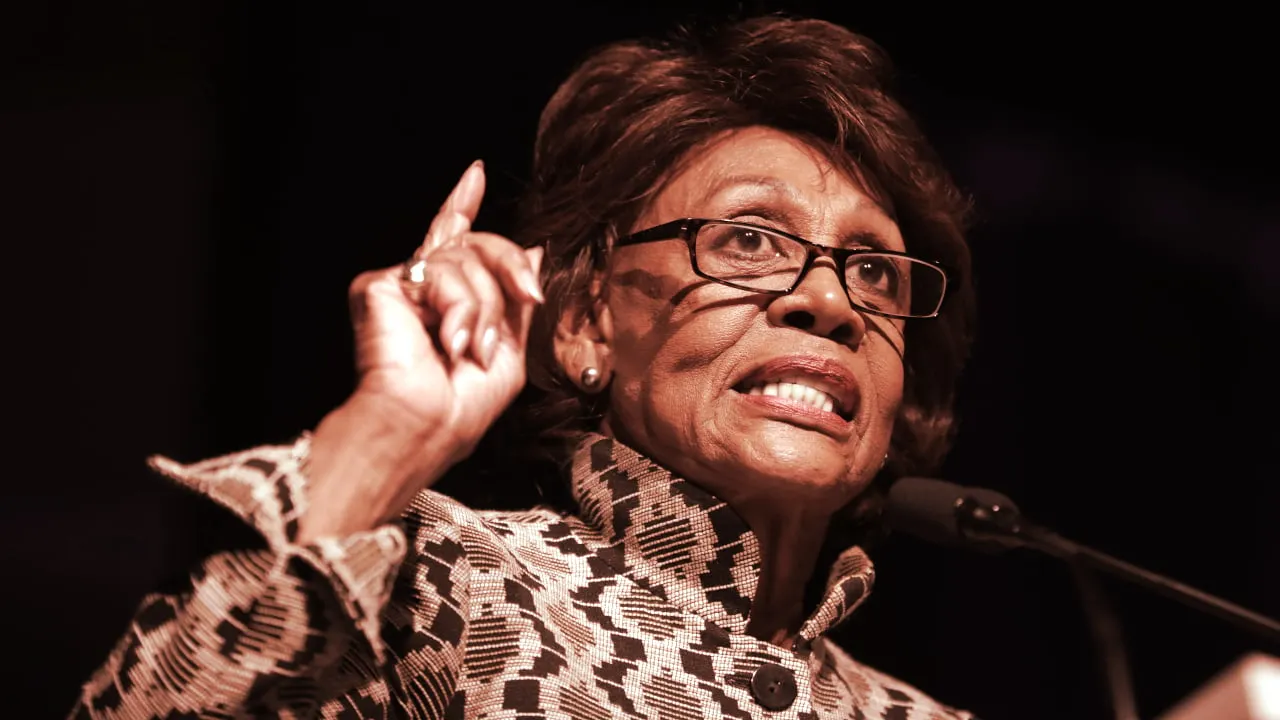Members of the U.S. House Financial Services Committee turned their attention to stablecoins Wednesday, picking up where they left off on regulation pushed back last year. But lawmakers said any progress made since then is tenuous at best.
FSC ranking member Maxine Waters (D-CA) suggested that lawmakers are “starting from scratch” after Republicans made alterations to a bill that died on the vine last year ahead of the midterm election called the Stablecoin TRUST Act.
Lawmakers’ most recent pass at getting stablecoin legislation doesn't have a catchy name yet. Right now, it's still called “To be added Act of 2023.” Representative Stephen Lynch (D-MA) criticized the legislation being discussed, saying the recent banking crisis spotlights the need to keep digital assets away from traditional finance.
“I strongly believe we need to separate crypto assets from our banking system, and this bill does just the opposite,” he said. “If the recent bank runs have taught us anything, it is the danger of allowing shadow-banking products, particularly stablecoins, to issue deposit-like products without FDIC insurance.”
At the same time, Lynch said that one of the “saving graces” of the crypto exchange FTX’s collapse was that it didn’t spill over into the traditional financial system, saying losses would’ve occurred for investors more broadly if crypto hadn’t been “ring-fenced.”
The high-profile hearing on regulation took place a day after some Committee members grilled Securities and Exchange Commission (SEC) Chair Gary Gensler on his approach toward the digital assets industry. Members of the Committee were set to review 72 pages worth of draft legislation that would “provide requirements for payment stablecoin issuers” and foster “research on a digital dollar.”
Stablecoin Ties to Traditional Banks
Lynch vocalized concerns about the potential harm that crypto could pose to traditional finance. Yet, it was the failure of a 40-year-old bank that cast a temporary cloud over crypto last month.
Silicon Valley Bank’s abrupt closure caused one of the leading stablecoins, Circle’s USDC, to lose its peg to the U.S. dollar. The token fell as low as 87 cents, but eventually reclaimed its normal price, days after the government intervened in the crisis and guaranteed SVB depositors would be made whole.
One of Circle’s main takeaways from the banking crisis was that the firm needed to make sure it could shield itself from exposure to traditional finance, said Circle’s chief strategy officer and head of global policy, who testified during the hearing.
“What we learned with the failure of not one bank but three successive bank failures consecutively over the course of several weeks, was that we had to protect our business from risks in banking,” he said.
The stablecoin bill covers a regulatory framework for stablecoins on both the state and federal level, calls for a two-year moratorium on new stablecoins that solely maintain their price using other tokens pending research from the U.S. Treasury Department, and sets standards for interoperability, reporting, and enforcement.
How NYDFS Has Handled Stablecoins
Among the witnesses that testified Wednesday were Superintendent Adrienne Harris of the New York State Department of Financial Services (DFS), Adjunct Assistant Professor of Business at Columbia Business School Austin Campbell, and Consumer Reports Director of Financial Fairness Delicia Reynolds Hand.
Last June, the DFS issued regulatory guidance on stablecoins that outlined base criteria for stablecoin issuers in the state. The regulator oversaw the issuing of Paxos’s Binance-branded stablecoin BUSD, and it directed Paxos to cease issuing the token in February.
Posing questions to Harris about the state’s regulatory process, Waters said she was “a little bit surprised” to know that New York has a framework for regulating stablecoins.
Stablecoins comprise a significant chunk of the crypto market, around $132 billion, or roughly 10%, of the $1.27 trillion global market capitalization, according to CoinGecko. Tether’s USDT and Circle’s USD Coin are the two largest stablecoins, valued at $81 billion and $31 billion, respectively.
Blockchain Association Weighs In
Blockchain Association Chief Policy Officer Jake Chervinsky also testified on Wednesday. Prior to his appearance before the Committee Wednesday, Chervinsky shared written testimony arguing that “different types of stablecoins merit different kinds of regulation” and “the United States should support stablecoins instead of creating a [central bank digital currency].”
In terms of what could yield a balanced bill for custodial stablecoins—issued by a company and backed by capital kept in a financial institution—Chervinsky stated legislation should provide opportunities across institutions, address the quality of issuers’ collateral, and “clearly delineate regulatory authority on the federal level.”
Chervinsky noted during his testimony Wednesday that stablecoins denominated in U.S. dollars could be a good thing for letting the greenback flourish on the global stage.
“Given the right policy, stablecoins can revolutionize the payments system and reinforce the dominance of the U.S. dollar at a time when our foreign adversaries like China are seeking to undermine its status as the global reserve currency,” he said.
Regulating In Terra’s Shadow
The Committee’s hearing comes nearly a year after Terra’s UST stablecoin and sister token LUNA collapsed. The catastrophic wipeout of TerraUSD shredded more than $40 billion of investors’ wealth last May, dragging down the crypto market as a whole.
TerraUSD was an algorithmic stablecoin, falling under a unique class of tokens pegged to the price of a sovereign currency like the U.S. dollar. While conventional stablecoins are collateralized by traditional assets like the buck, algorithmic stablecoins seek to maintain their value using code and market incentives, often involving multiple tokens.
Before the implosion of Terra’s ecosystem led to a wave of high-profile bankruptcies—sinking firms such as the hedge fund Three Arrows Capital and crypto lenders like Celsius and Voyager—Treasury Secretary Janet Yellen called for stablecoin regulation.
Gensler has weighed in on stablecoins since TerraUSD’s fateful slide too. Last July, the SEC boss called stablecoins “poker chips,” claiming their main use was as a settlement tool in decentralized finance, referring to blockchain-based tools that allow for the trading, borrowing, and lending of crypto assets without third-party intermediaries.
Mentioned that same month by Fed Chairman Jerome Powell, his description of stablecoins was less colorful than Gensler’s. The technology resembles bank deposits and money market mutual funds, Powell said, suggesting they should be regulated in “comparable ways.”

